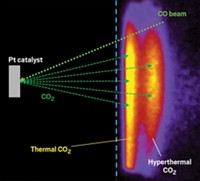Advertisement
Grab your lab coat. Let's get started
Welcome!
Welcome!
Create an account below to get 6 C&EN articles per month, receive newsletters and more - all free.
It seems this is your first time logging in online. Please enter the following information to continue.
As an ACS member you automatically get access to this site. All we need is few more details to create your reading experience.
Not you? Sign in with a different account.
Not you? Sign in with a different account.
ERROR 1
ERROR 1
ERROR 2
ERROR 2
ERROR 2
ERROR 2
ERROR 2
Password and Confirm password must match.
If you have an ACS member number, please enter it here so we can link this account to your membership. (optional)
ERROR 2
ACS values your privacy. By submitting your information, you are gaining access to C&EN and subscribing to our weekly newsletter. We use the information you provide to make your reading experience better, and we will never sell your data to third party members.
Physical Chemistry
Pressure-Based Rates By Theory Alone
Chemical Kinetics: Method reveals how pressure affects reaction rates without need for experimental data
by Stu Borman
December 4, 2014
| A version of this story appeared in
Volume 92, Issue 49
Researchers have devised a new theoretical method for calculating the speediness of reactions whose rates depend strongly on pressure. In the past, such calculations have always needed at least a bit of empirical help, but the new technique does the job purely theoretically, with no experimental data needed.

The speed of some reactions depends mostly on temperature, and rates of those reactions could in many cases already be determined theoretically without experimental assistance. But rates of some reactions depend primarily on pressure, and calculating them has proven to be much more difficult.
The new technique could make it easier to obtain such information, especially for reactions for which experimental kinetics data are unavailable. Pressure-dependent reaction rates are important because researchers can use them to optimize reactions for industrial use, understand chemical reactions in space, and estimate environmental and other effects of combustion and atmospheric processes.
The new approach was developed by Stephen J. Klippenstein of Argonne National Laboratory, Ahren W. Jasper of Sandia National Laboratories, and coworkers (Science 2014, DOI: 10.1126/science.1260856). In each of the three reactions they studied, their theoretical rate predictions were quantitatively accurate—within about 20% of previous experimental data.
The work is “the first completely a priori, first-principles calculation of pressure-dependent reaction rates,” comments chemical kinetics modeling expert William H. Green of MIT. “All the other pressure-dependent rate calculations in the literature contain at least one adjustable parameter tuned to match experiments. Pressure-dependent reaction rates are important in almost all high-temperature situations above about 500 °C, including all of combustion and much of industrial chemistry, and also at low pressures, such as in interstellar space.”
The Argonne and Sandia scientists demonstrated the technique on hydrocarbon radical dissociation reactions, such as the pressure-dependent radical dissociation of methane. But they note that it could be used to model a wide range of other pressure-dependent reactions as well. In future work, they hope to demonstrate its applicability to complex multistep reactions, particularly those occurring in combustion processes.
Dissociating molecules in pressure-dependent reactions have two characteristic dynamic properties, total internal energy and angular momentum. The new procedure simulates pressure-dependent changes that occur in these two parameters as molecules collide and react. It then uses mathematical models to convert the resulting data into conventional chemical reaction rates, which depend on both pressure and temperature.
“Putting together the combination of calculations that are needed for this is a complicated business,” says theoretical chemistry specialist George C. Schatz of Northwestern University. “It is great to see that when this is implemented it is possible to calculate rates that accurately agree with careful measurements. This connection of theory and experiment has been long sought after.”



Join the conversation
Contact the reporter
Submit a Letter to the Editor for publication
Engage with us on Twitter